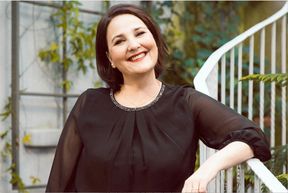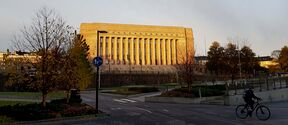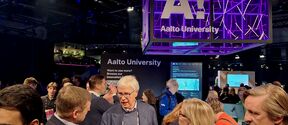Paula Hohti Erichsen follows the trail of 500-year-old fashion

Professor Paula Hohti Erichsen , what do you research and why?
I study the history of material culture and fashion. At the moment, I am in charge of a research project in which we are examining the birth and development of European fashion in the early modern period. We are particularly interested in how garments and accessories spread as fashionable items among the lower classes. Among other things, we are considering how shoemakers, hairdressers and bakers dressed in the 1500s and 1600s and how this influenced people’s understanding of fashion.
Our second important task is to develop new methods for studying the history of fashion and clothing, as very few historical costumes have been preserved and the documentation about them is limited. We combine traditional historical research with hands-on approaches, such as restoring historical objects by using the old colour recipes or reconstructing textile objects mentioned in historical documents. This provides us with information on how clothing has been produced in the past and enables us to make visible once again costumes, colours and production methods that have not been preserved to the present day. In this process, we are working in close cooperation with handicraft professionals.
How did you become a researcher?
I started my university studies only at the age of 28, when I began studying for a major in art history. I completed my degree in the UK at Sussex University, where the atmosphere was encouraging but at the same time extremely demanding. Studying in small groups and engaging in critical discussion opened up the world of research in an interesting way. I was motivated, enthusiastic and ambitious right from the beginning. I wanted to be a researcher.
As a researcher, I have had many great opportunities to challenge myself. I completed my doctoral dissertation as part of an international research project, and then I immediately got a place in the Helsinki Collegium for Advanced Studies. These and other researcher positions obtained in the following years made it possible to develop my work and apply for additional funding.
What have been the finest moments of your career?
In 2016, I applied for ERC funding from the European Research Council. Preparing that application challenged me to deeply consider my own research more than anything else has. The finest moment in my career was probably the interview in Brussels that was part of this application. An inspiring discussion developed, and it felt like I was one of the panellists’ colleagues, one of their peers. I was able to enjoy the discussion and reflect on the questions without the need to defend myself. Of course, it was also great that I got the funding.
What is required of a researcher?
A researcher needs to work hard and have a critical attitude towards their own research, while also being cheerful, playful and creative. A good dose of courage and humility is also a good thing. It is particularly important to create good networks and circles of cooperation and to treat co-researchers well and with respect. Personally, I select my research partners carefully. For me, it is not only the researcher's profile and competence that is important, but also whether we can work together in a good, joyful spirit. I try to gather around me friendly people who are good at working with others.
What do you expect from the future?
I want to continue as a researcher and set up new research projects. At the same time, I would like to slow my pace a bit and concentrate on helping young researchers progress with their careers.
Professor Paula Hohti Erichsen and Aalto's other new tenured professors will be speaking about their research at the Installation Talks event on 29 January. We hope to see you there! Further information is available here
Read more news

Entrepreneurship offers women empowerment in late-stage careers
Launching their own venture offers older women a chance to turn their age into a competitive advantage, reveals new research.
Topics raised in the 2025 Learning Centre customer survey
Thank you to everyone who participated in the survey!
Elites wield huge influence over deepening polarisation –– now we can tell exactly how much
Researchers used network theory to develop a method for measuring the impact of individuals on societal division.






